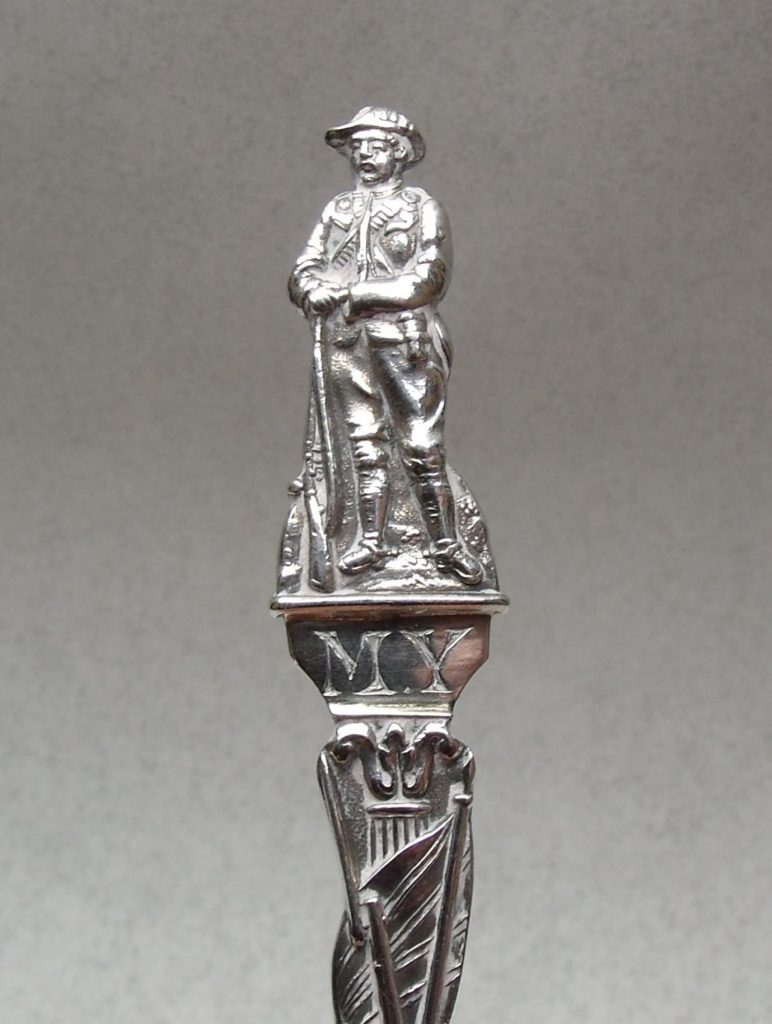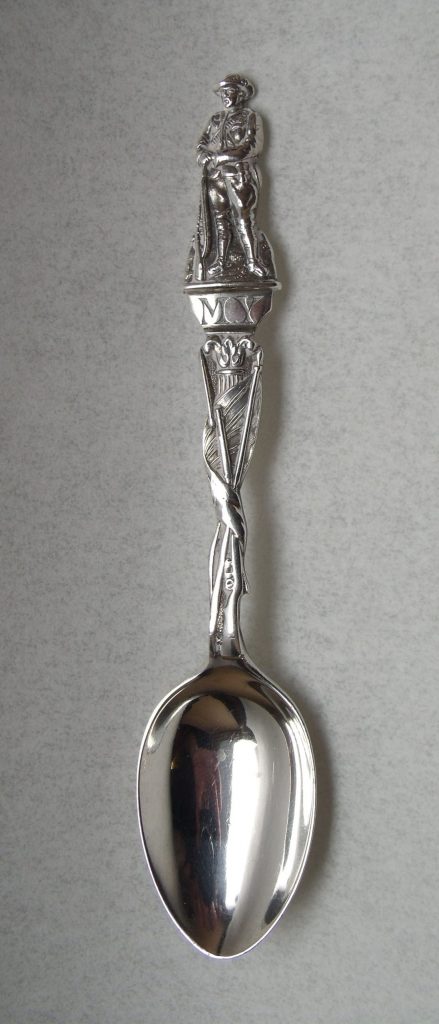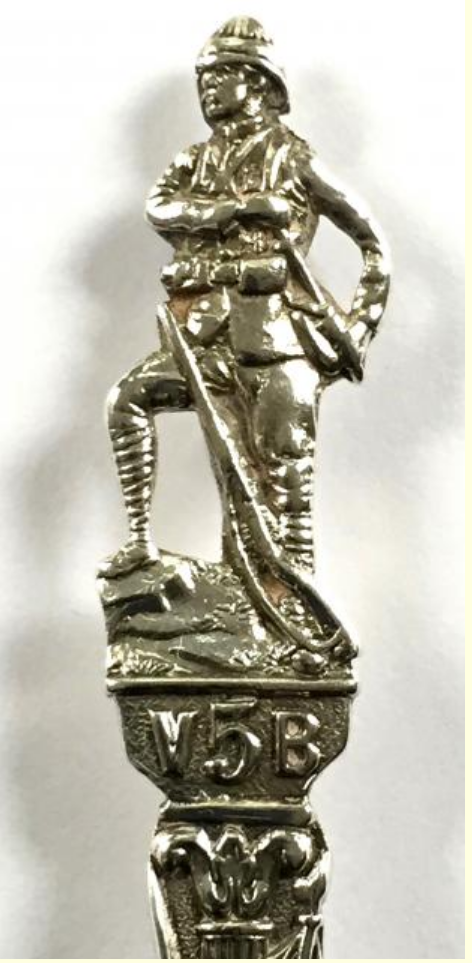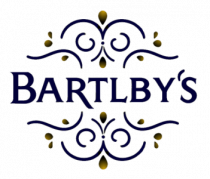
The question I really want to address in this post is what makes a spoon (or anything else) worth collecting. In truth there are probably as many answers to that question as there are collectors but I still think it’s something worth thinking about.
I’m going to use a Boer War commemorative spoon made by Cooper Bros & Sons in 1908 to tease out some possible answers and in the process perhaps illustrate that starting collecting silver needn’t be prohibitively expensive nor require esoteric knowledge. The spoon itself is a teaspoon about 12cm long and with a cast finial modeled as a soldier from the Imperial Yeomanry; a mounted force created to take on the Boer Commandos in the second Boer War (1900-1902)
So why this spoon? In many ways its not a particularly remarkable thing – Cooper Bros was a fairly large maker of silver wares from the late 19th century until the second half of the 20th century and, while describing these spoons as mass produced might be a stretch, they’re in no way unique one-off pieces made by an individual artisan. All that said the spoon might be described as collectible for a number of reasons. Firstly it’s of interest to collectors of military memorabilia, especially those with an interest in the Boer war or to collectors of military silver, or maybe to collectors of Birmingham silverware or spoon collectors more generally. But perhaps we might start by thinking about what makes a thing, anything, worth collecting.

Collecting is in many ways a form of treasure hunting and much of the pleasure lies in that hunt rather than in the things collected in and of themselves. So perhaps the first criteria is some sort of rarity. I know many book collectors for whom the internet ruined their collecting. Where once they trawled the shelves of second-hand bookshops looking for a book that had thus far eluded them, the internet made all those books instantly available; the hunt was curtailed and the enjoyment lost. Its worth noting here that rarity doesn’t necessarily mean expensive, it can do but it doesn’t have to. In fact being too expensive can undermine the desirability of an object as a collectible because it may put completing a collection beyond one’s means.
A collection isn’t simply a random collection of objects. Rather it’s a group of objects that all share some common theme or characteristic. So a collector of studio glass might decide to collect Murano paperweights with the aim of having an example of each design – a complete collection. An alternative might be to have a collection of the works of a particular designer, regardless of who they were designing for. The idea would be to have a collection that might not have every example of that designers work but which was representative of that designer’s body of work. In both cases the important thing is that the collector stands a good chance of ‘completing’ their collection So back to our spoon.

It seems that Cooper Bros. made a number of different Boer War commemorative spoons. So far I’ve turned up two designs including this South Wales Borderers version (image courtesy of Sally Bosley) but have been unable to discover just how many different designs there are. I’m guessing they were relatively successful for the company because in the 1930s they produced a ‘Kings and Queens of England’ series that are very similar in design, having a cast finial modelled as a monarch.
So its probably fair to assume that this spoon is part of a set of at least 6 different designs. I’ve found examples of two of these designs currently for sale online and they’re not that expensive. This suggests that they’re not incredibly rare but rare enough to make finding all the designs a reasonably challenging undertaking with no certainty of success. While these may turn up somewhere online they’re as likely to be lurking in a box at a flea market. To me they seem like an interesting thing to hunt.
Well like any good collectible antique they can be just be just the beginning. You could expand your focus and add other commemorative spoons by Cooper Bros. To my mind a more interesting direction might be other Boer War commemorative spoons – Cooper Brothers weren’t the only maker of such spoons. And perhaps collecting Boer War commemorative spoons leads to an interest in the history of the Cape Colony and you end up collecting silver made in the Cape during the colonial period – a far more expensive and esoteric area of collecting. It really doesn’t matter what we choose to collect but any antique collecting should expand our knowledge of the world and its history and its perhaps this, more than simply owning beautiful & interesting objects, that really represents the joy of being a collector.
